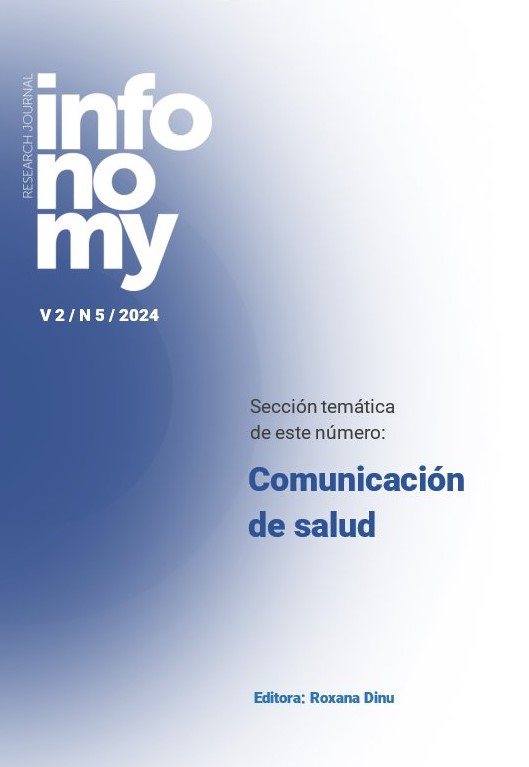Health-washing strategies and practices: cases of AvenaCol and ProActiv
DOI:
https://doi.org/10.3145/infonomy.24.057Keywords:
Health-washing, Food, Marketing strategies, Health communication, Consumers, Transparency, Advertising, Health claims, AvenaCol, ProActivAbstract
The growth in demand for health-promoting foods has prompted brands to develop marketing strategies that highlight the health benefits of their products. However, this trend has also led to the practice of health-washing, where benefits are exaggerated or distorted to attract consumers. This study analyses the cases of AvenaCol and ProActiv, two products that claim to lower cholesterol in various ways. Through a thematic discursive analysis of the content of their advertising messages and labels, the health and nutrition claims and the transparency of their communication are assessed. The results suggest that, although both products highlight perceived benefits, they tend to omit essential information on consumption and effectiveness, which can be misleading. This study concludes with a critical reflection on the ethical responsibility of brands in the health product sector and underlines the need for transparent communication to protect consumers and strengthen their trust in the food market.References
André, Q.; Chandon, P.; Haws, K. (2019). Healthy through presence or absence, nature or science? A framework for understanding front-of-package food claims. Journal of Public Policy & Marketing, 38(2), 172-191. https://doi.org/10.1177/0743915618824332
Baker, M. T.; Lu, P.; Parrella, J. A.; Leggette, H. R. (2022). Consumer acceptance toward functional foods: A scoping review. International Journal of Environmental Research and Public Health, 19(3), 1217. https://doi.org/10.3390/ijerph19031217
Bañales, I. (2021). Duración de las campañas publicitarias en redes sociales. Granada Empresas, 26 de agosto. https://www.granadaempresas.es/noticias/cuanto-durar-una-campana-publicitaria-cautivar-los-usuarios
Calderón, A. (2024). La Universidad Europea alerta sobre la desinformación en el etiquetado de alimentos saludables.Nutra Salud, 4 de junio. https://www.nutrasalud.es/noticias/20240604/la-universidad-europea-alerta-sobre-la-desinformacion-en-el-etiqueta-de-alimentos-saludables
Canals-Caballero, A.; Saiz-Sabater, M. (2022). Alimentando un futuro sostenible. Estudio sobre inseguridad alimentaria en hogares españoles, antes y durante la COVID-19: e202203032. Revista Española de Salud Pública, 96, 2. https://ojs.sanidad.gob.es/index.php/resp/article/view/368
Carmona-Rodríguez, M.; Anguita-Acero, J. María (2021). El impacto de la publicidad en los hábitos alimenticios de los españoles: una cuestión de educación alimentaria. Revista de Comunicación y Salud,11, 29-53. https://doi.org/10.35669/rcys.2021.11.e267
Colegio Oficial de Dietistas-Nutricionistas de la Comunitat Valenciana (2019). Más de nueve millones de españoles padecen enfermedades asociadas a la alimentación. https://www.codinucova.es/actualidad/mas-de-nueve-millones-de-espanoles-padecen-enfermedades-asociadas-la-alimentacion
Comisión Europea (2006). Reglamento (CE) nº 1924/2006 (2006, 30 de diciembre). Reglamento (CE) N o 1924/2006 del Parlamento Europeo y del Consejo de 20 de diciembre de 2006 relativo a las declaraciones nutricionales y de propiedades saludables en los alimentos. Diario Oficial de la Unión Europea. https://www.boe.es/doue/2006/404/L00009-00025.pdf
Domingues-Martinho, V. J. P. (2020). Food marketing as a special ingredient in consumer choices: The main insights from existing literature. Foods, 9(11), 1651. https://doi.org/10.3390/foods9111651
Domínguez-Díaz, L.; Fernández-Ruiz, V.; Cámara, M. (2020). An international regulatory review of food health-related claims in functional food products labeling. Journal of Functional Foods, 68, 103896. https://doi.org/10.1016/j.jff.2020.103896
Duarte, P.; Teixeira, M. (2021). Healthy eating as a trend: consumers’ perceptions towards products with nutrition and health claims. Revista brasileira de gestão de negócios, 23(3), 405-421. https://doi.org/10.7819/rbgn.v23i3.4113
Heiss, R.; Naderer, B.; Matthes, J. (2020).Healthwashing in high-sugar food advertising: the effect of prior information on healthwashing perceptions in Austria. Health Promotion International, 36(4), 1029-1038. https://doi.org/10.1093/heapro/daaa086
Hobbs, R. (2022). Media literacy. In: The Routledge international handbook of children, adolescents, and media (pp. 475-482). Routledge.
Hong, X.; Li, C.; Wang, L.; Gao, Z.; Wang, M.; Zhang, H.; Monahan, F. J. (2022). The effects of nutrition and health claim information on consumers’ sensory preferences and willingness to pay. Foods, 11(21), 3460. https://doi.org/10.3390/foods11213460
Jha, S. (2021). Everything you need to know about ‘healthwashing’.Times of India. http://timesofindia.indiatimes.com/articleshow/85067926.cms?utm_source=contentofinterest&utm_medium=text&utm_campaign=cppst
Jiménez-Sánchez, Á.; Vayas-Ruiz, E. C.; Frontera-Sánchez, M. R. (2018). Análisis de los envases en juguetes y alimentos para niños en el Ecuador. Methaodos. Revista de ciencias sociales, 6(1), 64-79. https://doi.org/10.17502/m.rcs.v6i1.224
Kaplan, D. M.; Thompson, P. B. (2019). Encyclopedia of food and agricultural ethics. SpringerNetherlands.
López-Noguero, F. (2002). El análisis de contenido como método de investigación. Revista de Educación, 4, 173. https://rabida.uhu.es/dspace/bitstream/handle/10272/1912/b15150434.pdf
Madureira-Lima, J.; Galea, S. (2018).Corporate practices and health: a framework and mechanisms. Global Health 14(21). https://doi.org/10.1186/s12992-018-0336-y
Moreno, M.; Luque, E. (2014). Comer por los ojos: la publicidad alimentaria y sus riesgos.Panorama Social, 19, 49-62. https://www.funcas.es/wpcontent/uploads/Migracion/Articulos/FUNCAS_PS/019art05.pdf
O'Hagan, L. A.; Eriksson, G. (2024). Food Marketing and Selling Healthy Lifestyles with Science: Transhistorical Perspectives.Taylor & Francis.
ONU-FAO (1996). Declaración de Roma sobre la Seguridad Alimentaria Mundial. Organización de las Naciones Unidas para la Agricultura y la Alimentación. https://www.fao.org/4/w3548s/w3548s00.htm
Robles-Martínez, B. (2023). Bajo la lupa: ProActiv original. Consumer-Eroski, 24 de abril. https://www.consumer.es/alimentacion/ingredientes-opinion-ProActiv-original
Sadler, C. R.; Grassby, T.; Hart, K.; Raats, M. M.; Sokolović, M.; Timotijevic, L. (2022). “Even we are confused”: A thematic analysis of professionals' perceptions of processed foods and challenges for communication. Frontiers in nutrition, 9, 826162. https://doi.org/10.3389/fnut.2022.826162
Telpner, M. (2020). Healthwashing: 8 tips to know. Meghantelpner, February 4. https://www.meghantelpner.com/healthwashing
Topolska, K.; Florkiewicz, A.; Filipiak-Florkiewicz, A. (2021). Functional food—consumer motivations and expectations. International journal of environmental research and public health, 18(10), 5327. https://doi.org/10.3390/ijerph18105327
Utopic(2024). Desenmascarando el healthwashing: La fina línea entre marketing y salud.Utopic, 9 de abril. https://www.utopiq.io/desenmascarando-el-healthwashing-la-fina-linea-entre-marketing-y-salud
Downloads
Published
How to Cite
Downloads
Dimensions
Issue
Section
License
Copyright (c) 2024 Andrea Tovar-Rivadeneyra, Álvaro Jiménez-Sánchez, Ana-Teresa López-Pastor

This work is licensed under a Creative Commons Attribution 4.0 International License.




